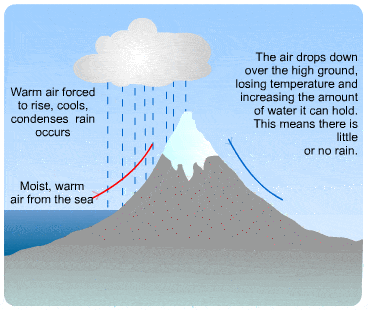Latitude
Latitude refers to how far a location is from the equator, and how close it is to either of the poles. The location on the Earth determines how much solar energy the location will get throughout the duration of the year. Because of 23.5 degree tilt of the Earth's axis, seasons also occur based on your latitude. Seasons are a major part of a region's climate.
Six major factors influencing climate can be represented in the acronym LOWERN. These factors are Latitude, Ocean currents, Winds and air masses, Elevation, Relief, and Nearness to water.
L.O.W.E.R.N.
Ocean Currents
Ocean currents are connected to the hydrosphere. Ocean water circulates around the world through ocean currents. Different ocean currents flow at different speeds and have different temperatures. These currents bring nutrients to support lots of life in the ocean. As well, the temperature of the ocean current directly affects the temperature of the air above it, which creates winds and weather.
Winds and Air Masses
Winds and air masses are connected to the atmosphere. Depending on your location, your climate will be changed depending on the wind and air masses affecting you. Depending on your latitude, you will have a different prevailing wind. As expected, such winds determine weather.
An air mass is a body of air with a uniform temperature, humidity, and pressure throughout. These traits are determined by the characteristics of that region; for example, air from the territories is cold and dry. When air masses collide, fronts are formed, creating different forms of weather.
Elevation
Elevation relates to the lithosphere. As you rise in elevation, you are subject to less air pressure and to colder temperatures, both important factors for climate. As well, the change in elevation will affect the flora and fauna; it will affect the biosphere.
Relief
Relief involves the lithosphere, hydrosphere, and atmosphere. When a mountainous area blocks humid prevailing winds from the sea, one side of the mountain receives heavy rains and the other side, very little precipitation. Because of this, landforms creating relief are major factor in determining regional climate.
Nearness to Water
Nearness to water involves the hydrosphere and the lithosphere. Because of the moderating effect of water, the proximity of a location to water will greatly affect it's climate. Water takes in heat and releases heat slower than the air or the land, so areas around water tend to have a milder and wetter climate.






